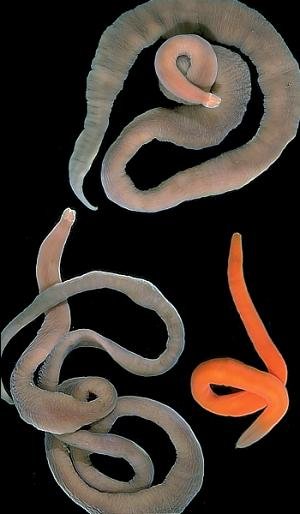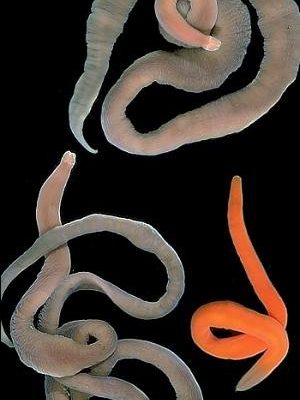
So, if you’re curious about what differentiates these two types of worms, you’re in the right spot. You might be surprised to learn about their unique features, habitats, and even their behaviors. Let’s dive in and explore the differences between bootlace and ribbon worms, unraveling some of the mysteries they hold.
What Are Bootlace Worms?
Bootlace worms, known scientifically as *Lineus longissimus*, are quite a spectacle. They can grow to incredible lengths, sometimes reaching up to 55 meters! That’s longer than most buses! You might find them in shallow waters along the coasts of Europe, typically hidden in sand or mud, camouflaged against the seabed. They’re known for their slender, ribbon-like bodies, which can make them look deceptively simple.
One remarkable thing about bootlace worms is their bright colors. They can present a dazzling array of hues, from deep blues to vivid reds. These colors aren’t just for show. They serve as signals to potential predators that these worms can be toxic. In their natural habitat, their appearance can vary based on the environment, making them a colorful part of the ocean tapestry.
What’s more fascinating is how bootlace worms reproduce. They can change genders! That’s right—these flexible creatures can switch from male to female depending on the population dynamics around them. Isn’t that wild? Their ability to adapt plays a crucial role in their survival, especially in varying environmental conditions.
Characteristics of Ribbon Worms
Now, let’s talk about ribbon worms, which belong to the phylum *Nemertea*. They may also have long, slender bodies, but the similarities end there. Ribbon worms can vary significantly in size, with some species measuring just a few centimeters, while others can stretch as long as bootlace worms! They mainly inhabit marine environments, but some types can also be found in freshwater.
One key feature of ribbon worms is their **proboscis**, a specialized feeding structure that can extend outwards to capture prey. It’s like having a built-in fishing rod! When they spot a tasty snack—like shrimp or small fish—they shoot out their proboscis quickly and reel it in. This unique feeding mechanism is quite different from how bootlace worms hunt for their food.
Ribbon worms also have a fascinating reproductive process. Many species can reproduce sexually, while some are capable of asexual reproduction. They can even regenerate lost body parts, which is pretty impressive. Some ribbon worms can lose a section of their body and grow it back, almost like a superhero of the worm world.
Habitat Differences
Let’s take a moment to dig deeper into where you’ll typically find bootlace and ribbon worms. Bootlace worms love shallow coastal waters, often burrowing into sandy substrates or hiding in seaweed. They thrive in places where they can stay hidden, which helps protect them from predators while still allowing them to catch their food.
In contrast, ribbon worms can be found in a wider range of environments. Some live in the deep sea, while others prefer brackish waters found in estuaries. They tend to inhabit mudflats, coral reefs, and sandy or rocky areas of the ocean floor. The diversity in their habitats shows how adaptable ribbon worms are, allowing them to survive in various environments.
Both types of worms prefer moist areas, but bootlace worms have a preference for shallower regions, while ribbon worms can go deeper where there’s less light and more complex ecosystems. In essence, their habitats shape their lifestyles and how they interact with their environment.
Feeding Habits
The feeding habits of bootlace worms and ribbon worms reveal significant differences in how they acquire food. Bootlace worms are primarily **detritivores**, meaning they feed on decomposing organic matter. They burrow through the sediment, consuming tiny bits of organic material. This method helps recycle nutrients back into the ecosystem, making them important players in their habitats.
On the other hand, ribbon worms are **predatory**. They actively hunt for prey, using their specialized proboscis to capture unsuspecting creatures. They often feast on small crustaceans, worms, and even fish. Their versatile diet allows them to adapt to different food sources, depending on what’s available in their environment.
So, while bootlace worms are busy breaking down organic matter and recycling nutrients, ribbon worms are on the prowl. Their distinct feeding strategies reflect their different roles in marine ecosystems—both are crucial, but in different ways.
Behavioral Traits
When it comes to behavior, bootlace and ribbon worms each have unique attributes that define them. Bootlace worms are relatively slow-moving and prefer to stay hidden from view. With their long bodies, they can stretch and squiggle through the sand and mud, making them well-suited for a life of camouflage. They’re often more shy than ribbon worms, avoiding confrontation.
Ribbon worms, however, display more active behaviors. Their hunting method requires them to be alert and quick. When capturing prey, they can be surprisingly fast, making their survival depend on swift actions. Some species are even known to exhibit defensive behaviors, like releasing toxic substances when threatened, which can deter potential predators.
Both behaviors reflect their lifestyles: bootlace worms are content to blend in and scavenge, while ribbon worms take a more assertive approach to eating, making them more dynamic in their interactions with other marine life.
Conservation Status
Understanding the conservation status of both bootlace and ribbon worms is essential for appreciating their role in marine ecosystems. Bootlace worms, while not frequently studied, face challenges due to habitat degradation. Pollution and coastal development can impact their populations by disrupting the sandy habitats they rely on.
On the other hand, ribbon worms have a broader range of species, with some being more vulnerable than others. Their precarious status often depends on environmental factors like water quality and habitat availability. Some ribbon worm species are still not thoroughly understood, leaving room for more research on their conservation needs.
Overall, both types of worms play a vital role in their ecosystems. Protecting their habitats and reducing human impact is crucial for ensuring their survival and the overall health of the marine environments they inhabit.
Final Thoughts on Bootlace and Ribbon Worms
So, there you have it! Bootlace worms and ribbon worms might both look like long, slimy threads, but they couldn’t be more different. From their habitats and feeding habits to their behavioral traits and conservation status, every aspect reveals the fascinating diversity of these marine creatures.
Next time you’re at the beach or exploring tide pools, keep an eye out. You might just see these remarkable worms in action, playing their part in the rich tapestry of ocean life. It just goes to show there’s always more to learn about the natural world around us, whether it’s a small worm or a giant whale. So, keep your curiosity alive—there’s always another layer to uncover!

